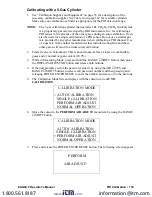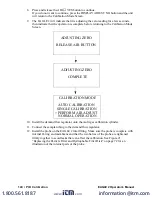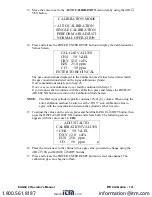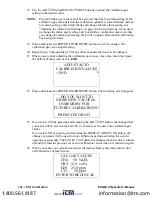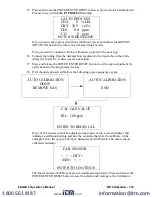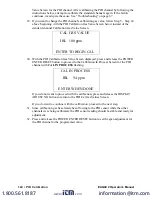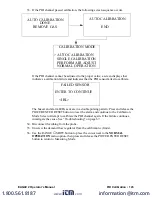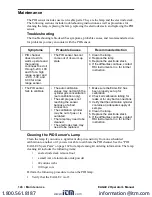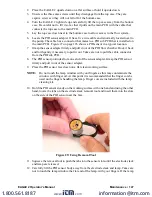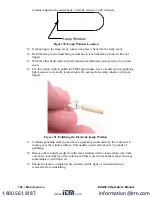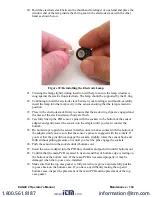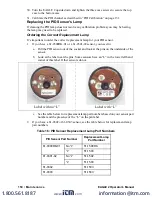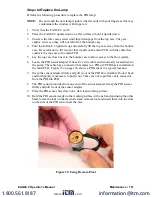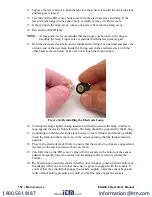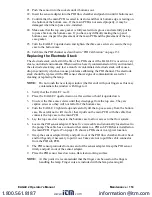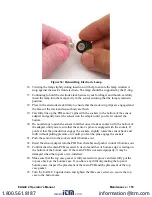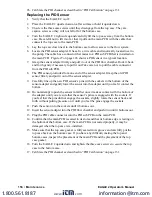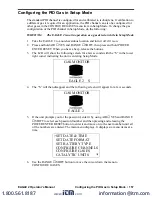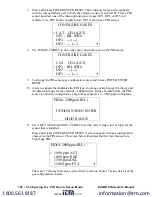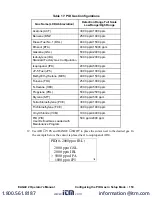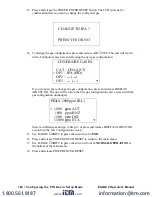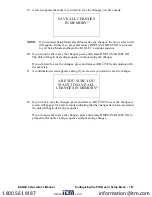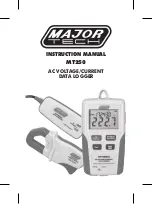
EAGLE 2 Operator’s Manual
Maintenance • 153
21. Push the sensor into the sockets until it bottoms out.
22. Insert the sensor adapter into the PID flow chamber and push it in until it bottoms out.
23. Confirm that the main PCB is seated in its slots and that its bottom edge is resting on
the bottom of the bottom case. If the main PCB is not seated properly, it may be
damaged when the top case is re-installed.
24. Make sure that the top case gasket is fully seated in its groove and carefully put the
top case back on the bottom case. If you have any difficulty mating the top and
bottom cases, inspect the placement of the main PCB and the placement of the top
case gasket.
25. Turn the EAGLE 2 upside down and tighten the three case screws to secure the top
case to the bottom case.
26. Calibrate the PID channel as described in “PID Calibration” on page 131.
Replacing the Electrode Stack
The electrode stack can last for the life of the PID sensor if the EAGLE 2 is used in a very
clean, controlled environment. When used in a heavily contaminated or dirty environment,
the electrode stack may only last a month. A contaminated electrode stack will cause a
drop in sensitivity which can cause problems calibrating the PID channel. The electrode
stack should be replaced if the PID sensor shows signs of contamination even after
cleaning or replacing the lamp.
NOTE:
Do not touch the new lamp window (the flat end) with your fingers as this may
contaminate the window with finger oil.
1. Verify that the EAGLE 2 is off.
2. Place the EAGLE 2 upside down on a flat surface or hold it upside down.
3. Unscrew the three case screws until they disengage from the top case. They are
captive screws so they will not fall off of the bottom case.
4. Turn the EAGLE 2 right side up and carefully lift the top case away from the bottom
case. Be careful not to lift it so far that it pulls on the main PCB with the cable that
connects the top case to the main PCB.
5. Lay the top case down next to the bottom case to allow access to the flow system.
6. Locate the PID sensor adapter. It has a five wire cable and is normally located next to
the pump. The cable has a connector that mates to a PID sub PCB that is installed on
the main PCB. Figure 27 on page 126 shows a PID sensor in a typical location.
7. Grasp the sensor adapter firmly and pull it out of the PID flow chamber. Rock it back
and forth gently if necessary to pull it out. Take care not to pull the cable connector
from the PID sub PCB.
8. The PID sensor protrudes from one end of the sensor adapter. Grasp the PID sensor
firmly and pull it out of the sensor adapter.
9. Place the PID sensor face down on a flat clean working surface.
NOTE:
At this point it is recommended that the finger cots be used on the fingers
handling the lamp. Finger cots are included with the lamp cleaning kit.
www.
.com
information@itm.com
1.800.561.8187

